Pure mountain water, the birthplace of plastic food models (food replicas) and all-night dance festivals. Despite all of this, Gujo Hachiman was one location we were most unsure about. Planning our trip we were thinking it would be idyllic. But even a few days before leaving we were not sure keeping Gujo Hachiman in the trip was worth the hassle. As soon as we arrived we knew we had made the right decision
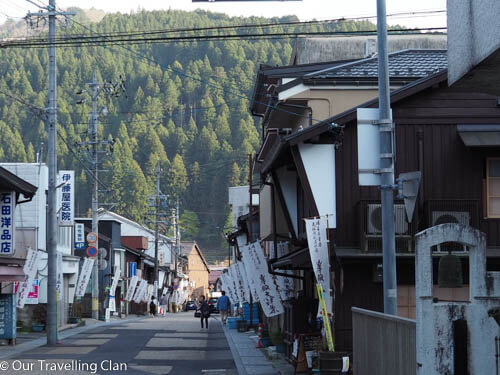
Arrival
After changing trains 3 times to get there including a tiny single carriage Kanagawa express we arrived in Gujo Hachiman. This slow journey gave us time to soak in the lovely rivers and mountains of the Gifu region.
Gujo Hachiman station was more rustic than the others in Japan. It is one of the few that didn’t have lifts or escalators available. After trudging our bags over the wooden bridge we exited and found the van to transport us to our Ryokan.
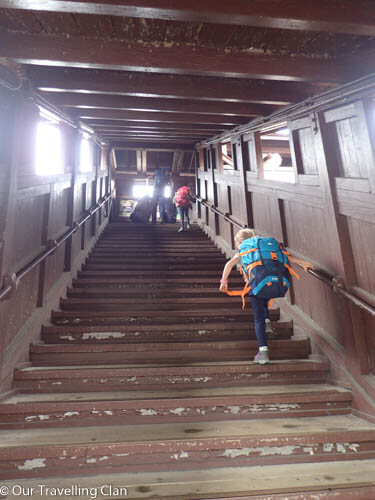
Table of Contents
Festivals on arrival.
Nearly two weeks into our trip we had lost track of days and didn’t realise it was Easter Sunday. We were surprised when our driver was taking many twists and turns to get to our Ryokan. Our driver negotiated around blocked roads and sweet-talked someone to get us to the door. The confused looks from officials made sense when we sat removing our shoes watching a parade marching past the door.
Now really, what is not to love about a town that puts on a huge parade to welcome you. Memories of our time in Cusco, Peru for our honeymoon came rushing back. When every day there seemed to be a parade with dancers and floats in the main square.
Our traditional room with tatami mats and beds on the floor had a wonderful view of the river. The sound of drums and music could be heard all around the town. From our Ryokan, we could watch the parade cross the bridge.
Birthplace of food replicas
Lonely Planet and the Gujo Hachiman tourist information informed us that this was the birthplace of the inventor of food replicas. If you have been anywhere in Japan you will have seen these around. They give you a visual representation of what is on the menu allowing you to just point at your preferred meal.
In the museum, there is a display and information, although all in Japanese about the inventor. All over town, there are displays of every possible food option but we were looking for Sample Kobo to make our own.
The town was full of visitors for the Spring festival ( the parade wasn’t for us after all). This meant there were no slots available on the day we arrived. We were able to book some sessions for the next day. I completed the Tempura workshop including making lettuce. Miss 6 and 8 made a tart and Mr OTC a spilt ice cream phone stand.
This was a great opportunity to make our own souvenirs. Looking around the shop there were so many examples of all the amazingly realistic foods they make. Miss 6, Edamame bean lover, was pleased to find realistic edamame beans on a hairband to wear everywhere.
The workshop itself was easy to follow and there was an English speaker to translate for me. It was very exciting to choose the vegetables I wanted and turn them into “tempura”
The girls made desserts, which require careful transportation. We learnt the hard way that the “cream” doesn’t set for 3 days. The dessert Miss 8 made was far more rustic when we arrived in our room than on leaving the shop.
Off the beaten track
One of the things that had attracted us to this town was its location. We are not fans of lots of people. We were excited at the possibility of a break away from the crowds. A chance to rest and recharge. We knew including Gujo Hachima was the right thing as soon as we arrived. This little rural hamlet with its cobbled streets, traditional houses and no traffic lights was just what we needed.
It is small-town Japan ( population about 40,000) and can be explored on foot. The kids were able to play around the river, making up all sorts of games.
It is also amazing to go to a place where we are one of the few “tourists”. A location which we had to try a bit harder to find what we needed. We actually had to use our phrasebook and google translate more often.
Clean water/ Sogo Sui water shrine
The sound of rushing water is all around. Being water people having the sound of water all around us was heaven. The Yoshida river rushing under the window of our Ryokan completed the feeling. There was a fire in Gujo Hachiman in 1652 and the town was almost completely destroyed. When rebuilding, the town included open drains by the sides of the roads to keep the town safe.
Gujo Hachiman is famous throughout Japan for its clean mountain water. There is even a shrine to water the Sogo Sui shrine.
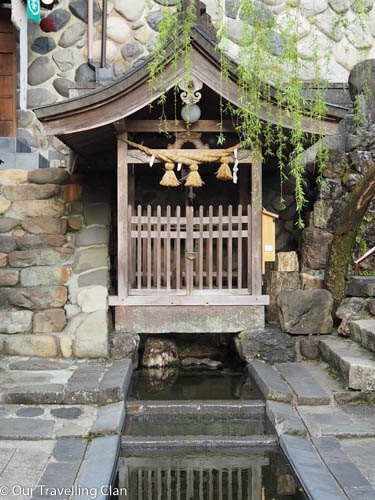
There are also many Mizu Fune (water boats/ drinking fountains) unique to Gujo Hachiman. These have two levels and often cups hanging on them. The top tier is for drinking and the lower level for washing vegetables.
Gujo Hachiman is famous for being shaped like a fish, quite appropriate for a town known for its water. This view is best appreciated from the Castle.
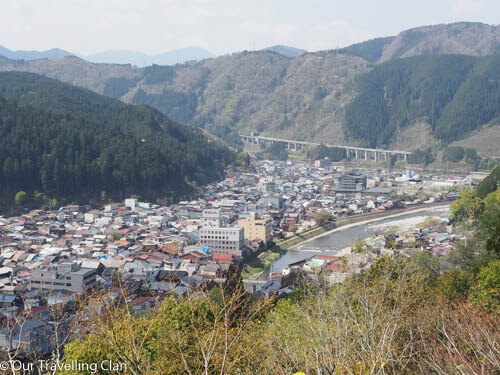
Gujo Hachiman Castle
Initially built in 1559 Gujo Hachiman Castle is another selling point. Those of you who know me are aware I love castles. You would have seen from my Scotland posts that castles are my happy place. To live in or happily visit all the castles I can find. Japanese castles are made of wood rather than stone but are no less impressive.
Gujo Hachiman Castle was demolished in 1871 but rebuilt in 1933 and is the oldest reconstructed wooden castle in Japan. It won a trip advisor award for the best castle in Japan in 2017.
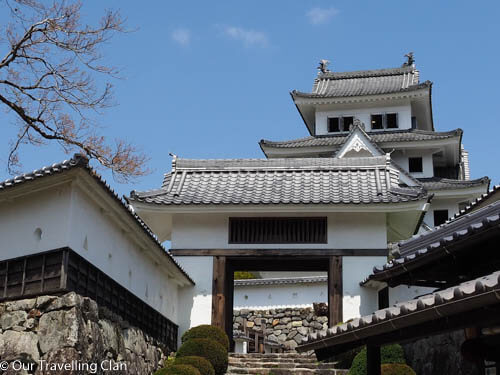
About a week earlier we stopped off at Himeji Castle to admire its many towers and cherry blossom tree. Gujo Hachiman Castle is like a miniature version with the advantage of far fewer visitors.
The castle is a steep 20-minute walk from the bus station in the town centre. Luckily it has a park on the way full of cherry blossoms to take a break. The tickets are 320 Y for adults and 150 Y for children for castle only tickets. There is also an option for a combined ticket including the museum.
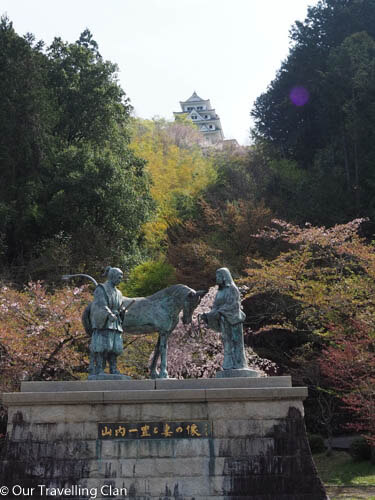
Gujo Odori Dance festival
One of the main claims to fame of Gujo Hachiman is the Gujo Odori dance festival. It is held every year from mid-July to early September, including a few days in August with all-night dancing. This is not your usual all-night dance party. The whole town takes part and has been happening for more than 400 years. 30,000 visitors come each year to see the traditional dances with lessons at the tourist centre during the festival.
Secret areas
A local man speaking English very well met us by the river to discuss why we were in Gujo Hachiman. Not many non-Japanese tourists stay here. Certainly, we didn’t see any when we were in town.
He offered to take us to an Onsen about 50 min out of town. Unfortunately, we had to decline as it was quite late in the day. He led us to Igawa Komichi on the other side of the river. Without his help, we would never have found it ourselves. A quiet area to stroll around that had many canals running behind the houses with fish you could feed.
Film crew
The feeling of being followed by a film crew made our last night more fun. Obviously, they were just exploring the same places as us. There seemed to be a Japanese Michael Palin complete with shoulder bag who was leading the crew around the sights. The girls were tempted to get on camera but we resisted.
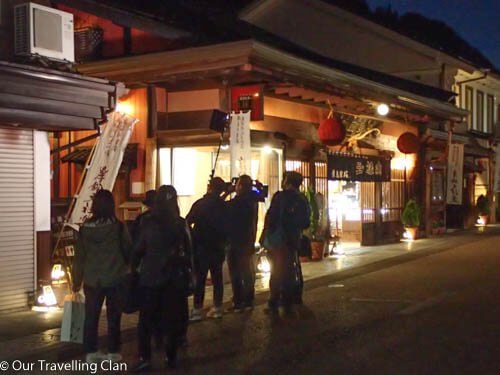
Museums
Gujo Hachiman has multiple museums, unfortunately, I was only able to visit one in the time we had. Gujo Hachiman museum covers a little bit of everything and was included in our ticket for the castle.
I seemed to cause confusion when I presented the ticket to the person at the entrance. She started to take me around to the shop to give me some sort of soup. Eventually, I alerted her to the fact that I wanted to see the museum. She then pointed me in the right direction. Almost every exhibit was in Japanese with no English translations and I was the only person in there. Providing me with one of my most surreal museum experiences ever.
The Museum included the history of the town, Basketweaving, the indigo festival, Gujo Odori dance festival and plastic food. At certain times of the day, there is a demonstration of dancing so you can learn the steps. The tourist office had information about Gujo Man the town mascot and other town highlights.
Where to stay in Gujo Hachiman
Miharaya Ryokan on Booking.com was a great find. We had the authentic experience sleeping on the floor, having traditional Japanese breakfasts (different each day) and the hot baths. Staying 2 nights was not nearly enough. There are many different types of accommodation available. If you are coming to one of the festivals it is advisable to book early.
Where to eat
We walked around town to try to work out what the options were. Hachimancho Shinmachi seemed to have lots of places to eat. Sunday night seemed to have more options open than the following night.
Our first experience of ordering our food from a vending machine was quite fun. The restaurant we went to had a limited English picture menu. We hand the slip of paper from the vending machine to the chef behind the counter to order.
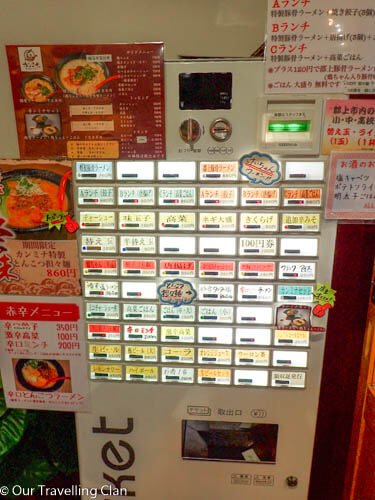
How to get there:
Leaving Kyoto early in the morning we caught the Shinkansen to Nagoya followed by the local train to Min Oota. We transferred to the tiny single carriage Kanagawa express. From Tokyo, the trip is slightly more direct, but they all involve the Nagarawaga sightseeing train.
Gujo Hachiman was a highlight of our trip to Japan. Being out of the way and difficult to get to we nearly didn’t make it. We could definitely have stayed for at least 3-4 nights. We are looking forward to going back, maybe for the Gujo Odori festival.
Is there any place you have been that became a highlight that you really weren’t sure about before you left? I would love to hear about it.
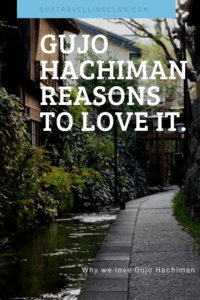
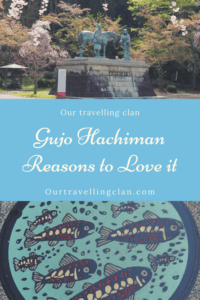
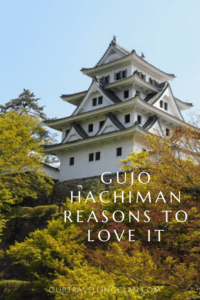

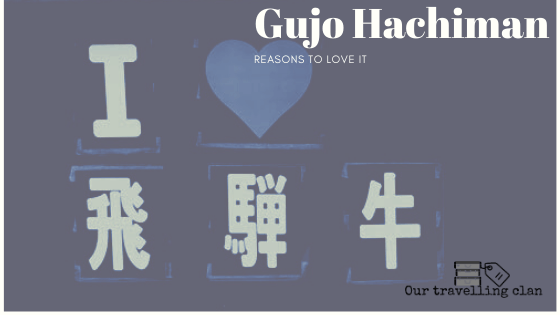
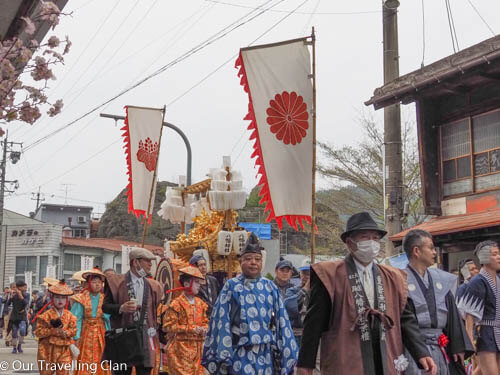
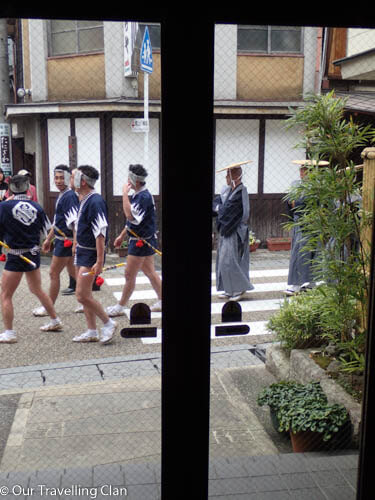
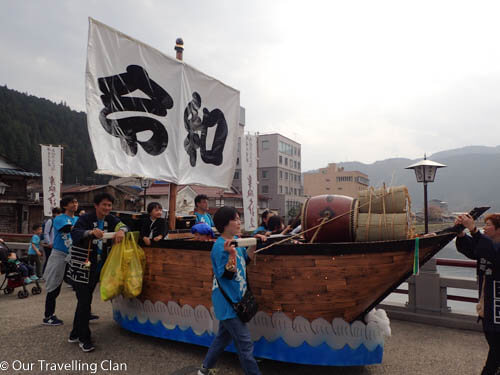
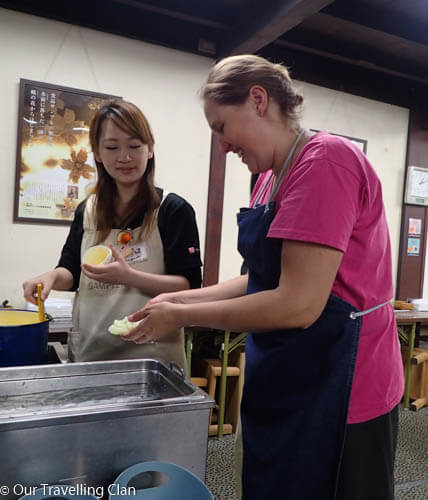
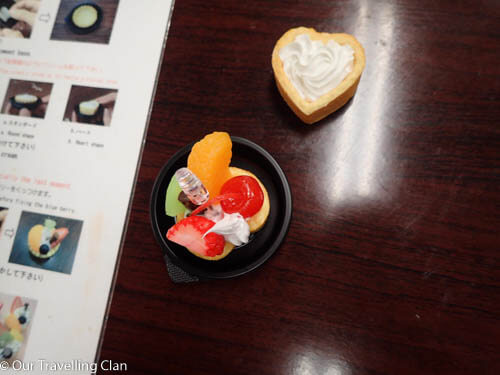
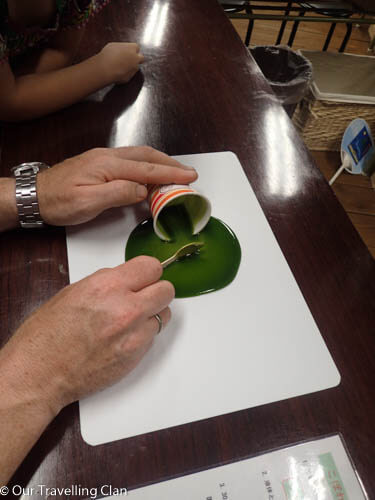
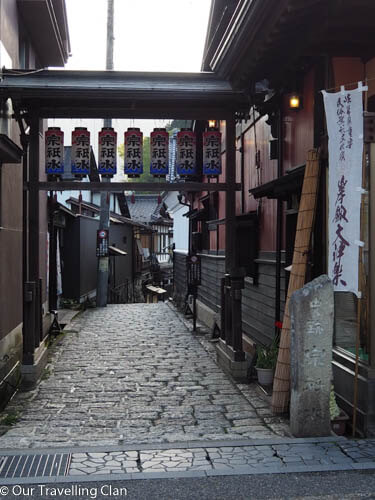
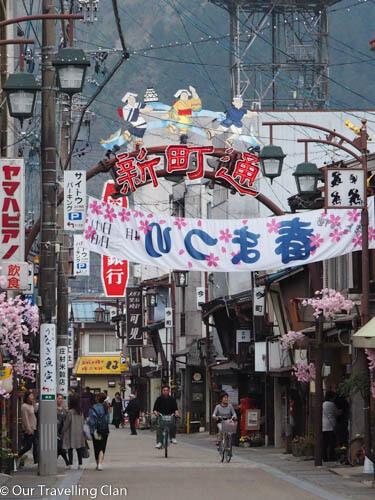
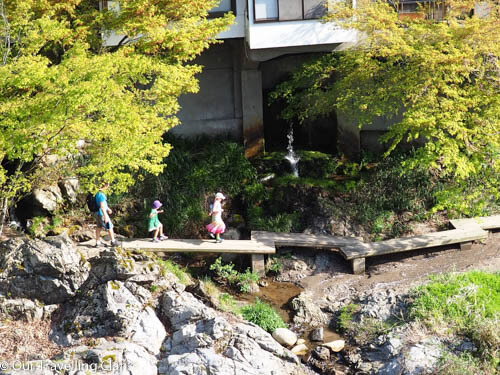
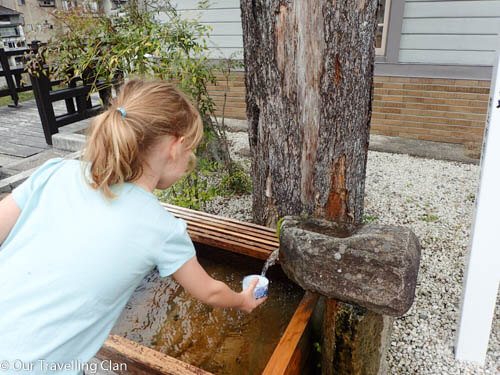
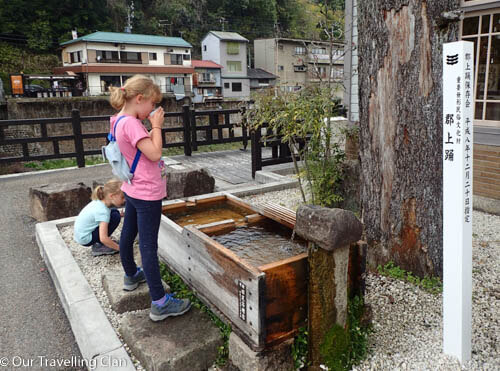
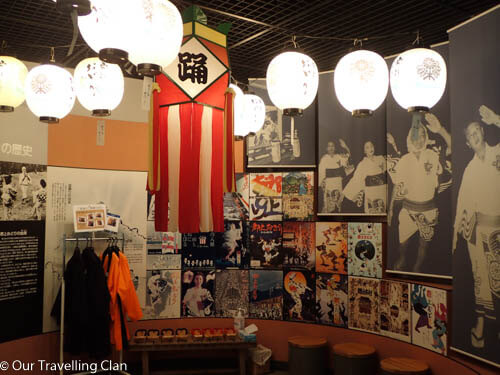
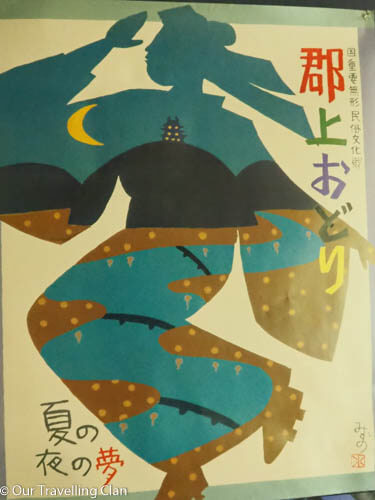
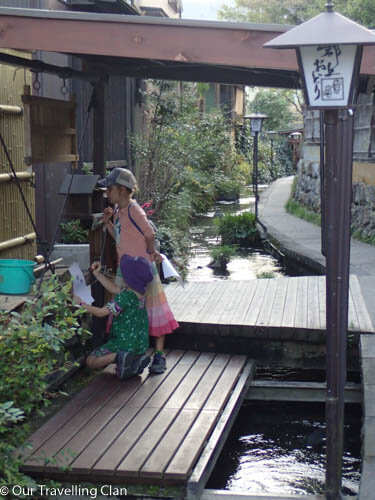
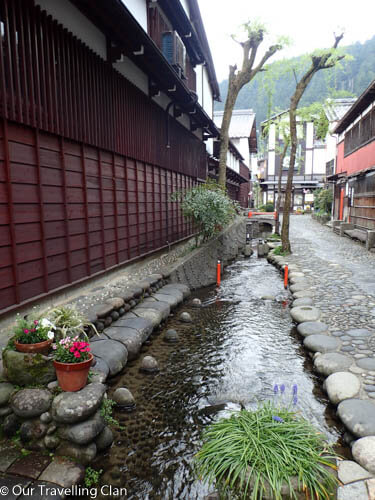
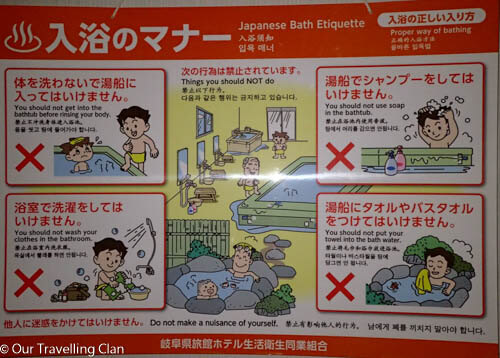
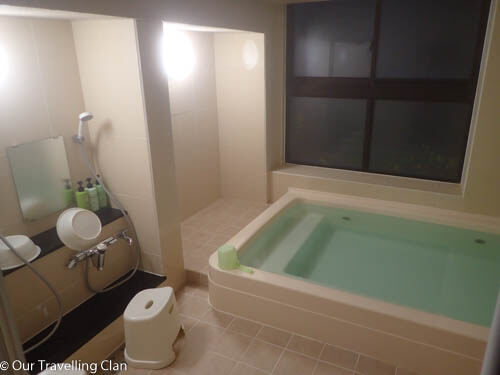
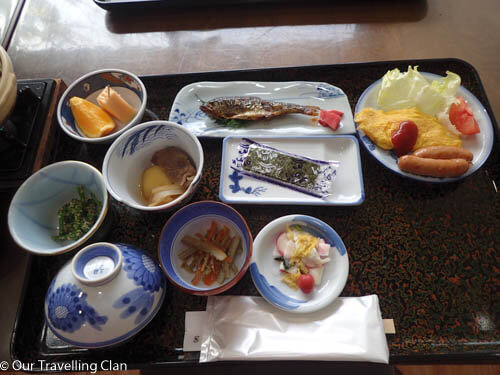
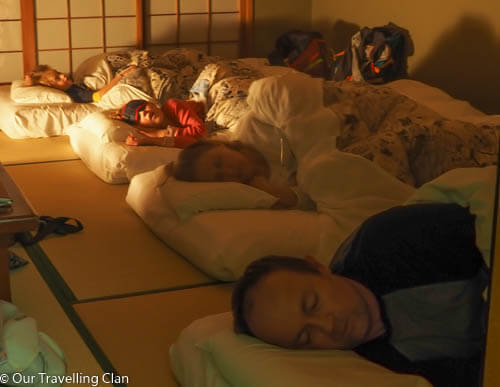
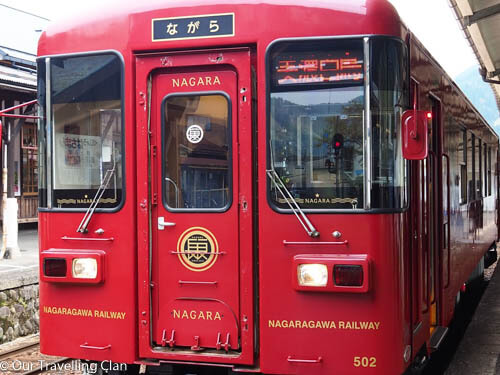
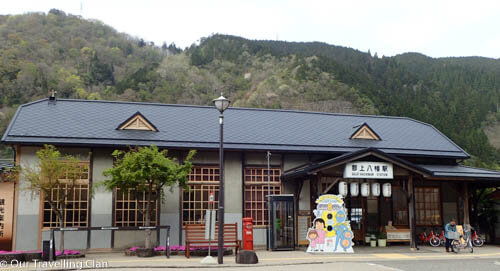
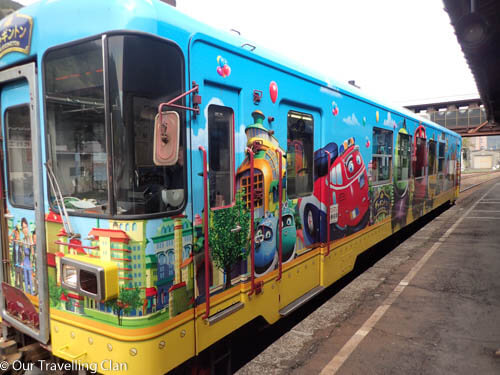

Sorry we missed it on our trip to Japan. Sounds fantastic
Just another reason to go back to Japan